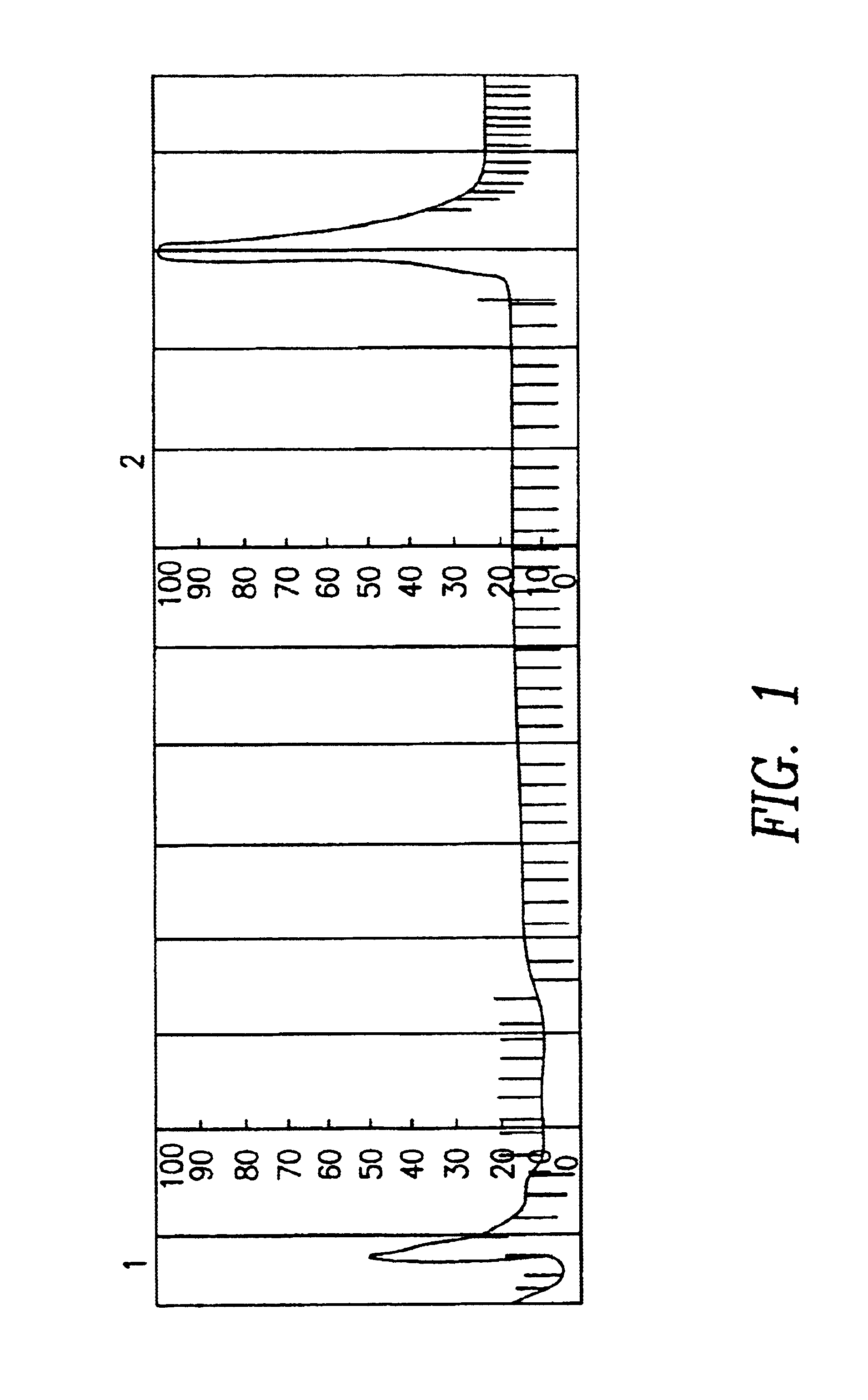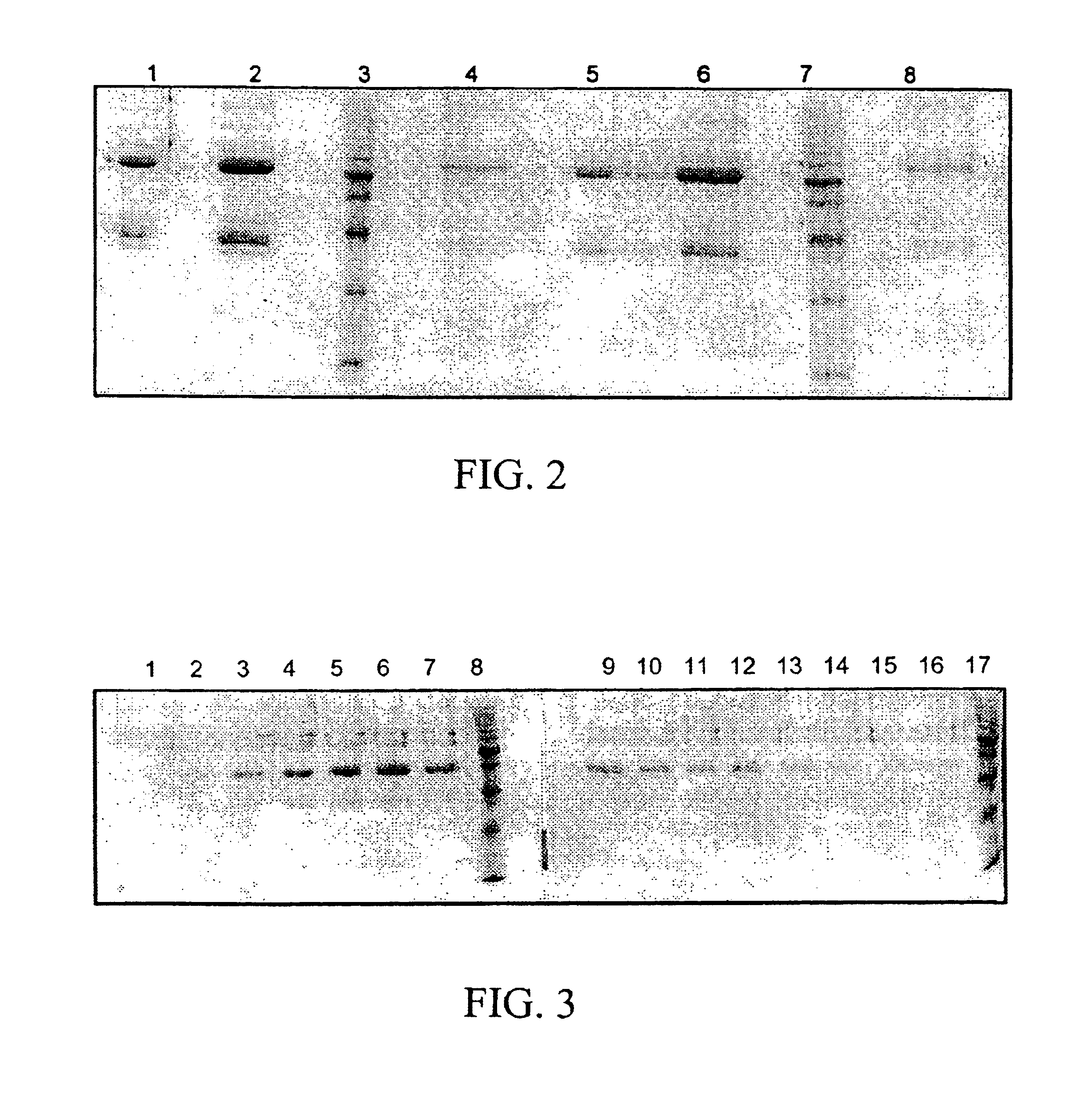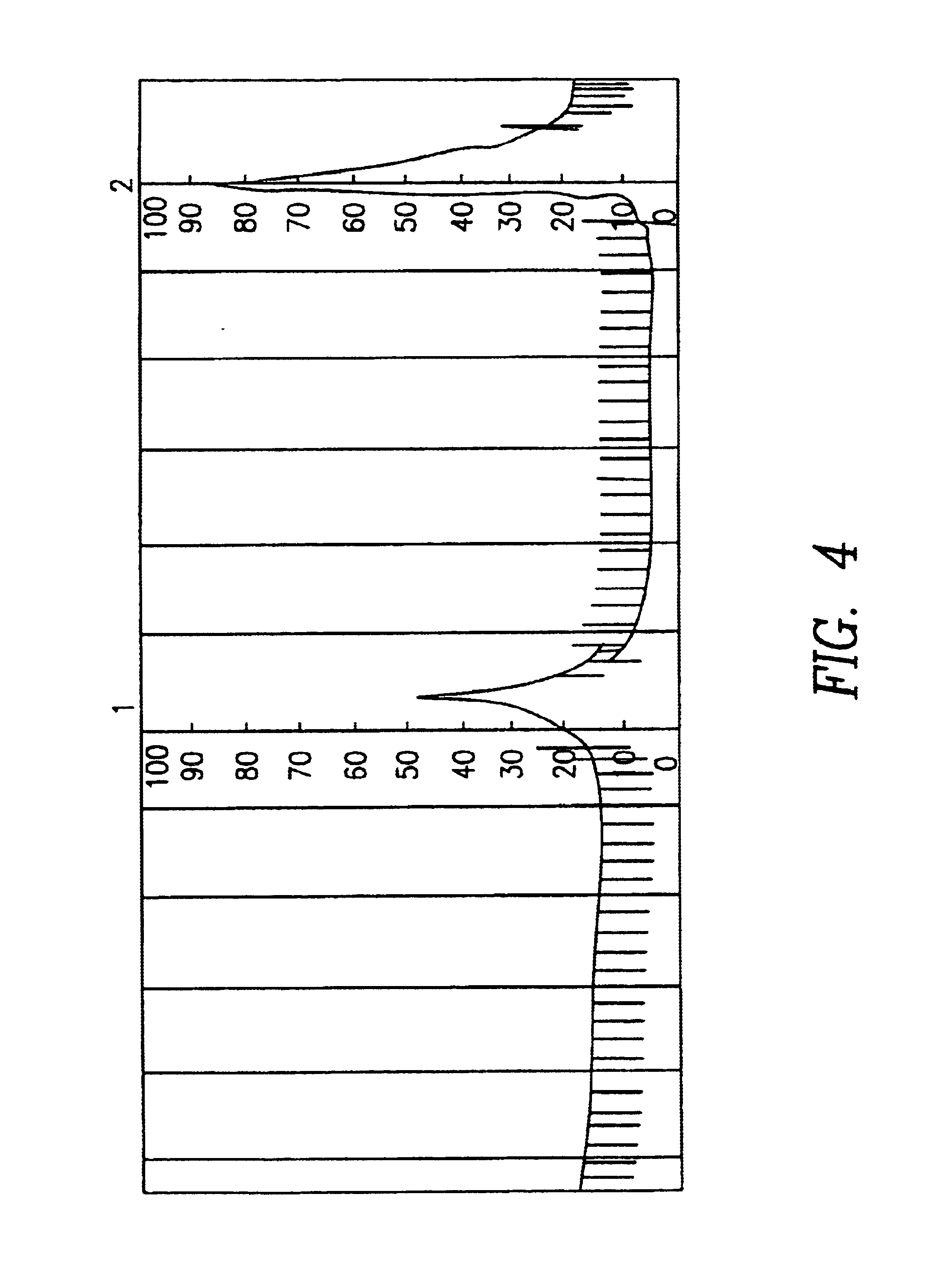Patient-specific immunoadsorbers for the extracorporeal apheresis and methods for their preparation
a technology of immunoadsorbers and extracorporeal apheresis, which is applied in the field of immunoadsorbers, can solve the problems of tissue involvement, affecting the quality of life, and endangering the survival of patients, and achieves the effect of avoiding additional costs and low costs
- Summary
- Abstract
- Description
- Claims
- Application Information
AI Technical Summary
Benefits of technology
Problems solved by technology
Method used
Image
Examples
example 1
Model Experiments for the Determination of the Biological Activity of Immobilized Human IgG by Bondiny Anti-human IgG (Poat)
Human IgG was coupled to the carriers sepharose 6FF, and pearl cellulose under elution conditions. Cl—CO—ONB activated gel containing approx. 30 μmol of ONB-carbonate groups per ml were used for coupling human IgG. 1 ml of antiserum (5.3 mg of anti-human IgG) were diluted by 1 ml of PBS and applied to the respective carriers at a flow rate of 0.1 ml / min. The columns were washed with a few column volumes of PBS and 3 M of NaCl at pH 5.0. The elution was with 0.1 M of glycine HCl, 0.05% Tween 20 at pH 2.0 and a flow rate of 1.0 at ml / min. at 2-6 Cl. The concentration of protein was spectrophotometrically determined at a wavelength of 280 nm after the eluates were neutralized with 0.5 M of K2HPO4. The relative bonding capacity of antibodies per ml gel is related to the coupling of IgG under standard conditions 0.5 M of phosphate buffer, 0.05% of Tween 20 at pH 7.2...
example 2
Model Experiments for the Determination of the Bonding Capacity of Human IgG (Antigen), Immobilized by Means of Base-activated ONB-carbonate Sepharose 6FF at pH of 3.0 by Affinity Chromatography Using Anti-human IgG (Antibodies) in Excess
Human IgG (sigma) was dissolved in the coupling buffer for coupling and filtered at 0.2 μm. This solution was added to the activated sepharose wetted by a solvent. Coupling was effected at room temperature for 1 hour under careful movement. After having been blocked with 1 M ethanolamine in 0.1 M borate at pH 8.0 for 1 hour, the gel was intensively washed, e.g. in a frit always with 10 times of the column volume in the following order: coupling buffer—water—0.01 HCl—water—24 hours with 0.1 borate butter at pH 8.3—water.
Affinity chromatography was carried out at 2-6° C. with the ECONO system (Bio-Rad) using an Omnifit column 5.0×0.3 I.D. and 350 mμl gel. Flow rates between 0.25 and 1.0 me / min. were chosen. The elution was measured by a UV-flowphotome...
example 3
Elution of Anti-HSA (Rabbits) by HSA from Antibody-antigen Complexes Applying HSA-coated Microtitration Plates for the Determination of Optimum Elution Conditions for Affinity Chromatography
96 well microtitration plates were coated with HSA. Each well was incubated with 0.1 μg anti-HSA. Anti-rabbit IgG conjugated with alkaline phosphatase (substrate: 4-nitrophenyl phosphate, (405 nm) served as detection system (ELISA). 200 μl of the respective elution buffer were pipetted into the wells. The elution was effected at room temperature in an hour with the microtitration plate being constantly moved. Anti-HSA was detected after the wells had been thoroughly washed. For the evaluation the average value of the measurements of always 8 wells was formed (% CV=4.4). The percentage of anti-HSA antibodies eluted with PBS was fixed with 0%.
Elution buffer for dissolving the antibody-antigen complexes eluted anti-HSA antibodies (%), with 0.015% Tween 20, is shown below
PBS, pH 7.30PBS + 1% of SDS, ...
PUM
| Property | Measurement | Unit |
|---|---|---|
| Volume | aaaaa | aaaaa |
| Volume | aaaaa | aaaaa |
| Volume | aaaaa | aaaaa |
Abstract
Description
Claims
Application Information
 Login to View More
Login to View More - R&D
- Intellectual Property
- Life Sciences
- Materials
- Tech Scout
- Unparalleled Data Quality
- Higher Quality Content
- 60% Fewer Hallucinations
Browse by: Latest US Patents, China's latest patents, Technical Efficacy Thesaurus, Application Domain, Technology Topic, Popular Technical Reports.
© 2025 PatSnap. All rights reserved.Legal|Privacy policy|Modern Slavery Act Transparency Statement|Sitemap|About US| Contact US: help@patsnap.com



